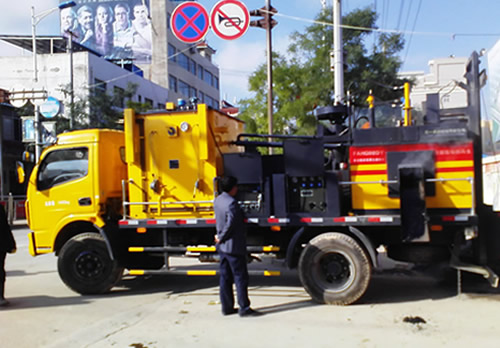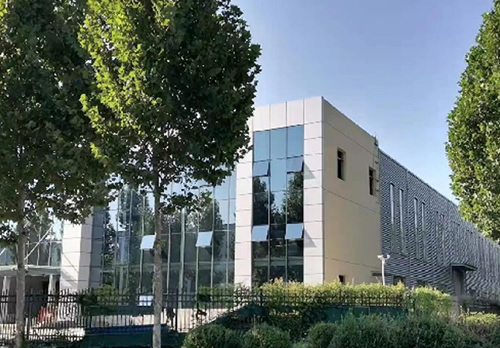1、 Introduction
As an important link connecting cities and rural areas, promoting economic exchange and social development, the condition of roads directly affects people's travel experience and the efficiency of economic activities. However, long-term exposure to vehicle loads, natural environmental erosion, and other factors inevitably leads to various road diseases. Traditional maintenance methods are inefficient, costly, and have a significant impact on traffic. In this context, comprehensive road maintenance vehicles have emerged, integrating multiple functions and becoming a powerful assistant in the field of modern road maintenance.
2、 The birth background and development process of road comprehensive maintenance vehicles
(1) Background of Birth
With the continuous growth of global traffic flow and the increasing mileage of road construction, the demand for road maintenance is becoming increasingly urgent. Traditional maintenance methods are inadequate in dealing with increasingly complex road surface diseases, such as low efficiency of manual repair and difficulty in ensuring consistent repair quality; Single function maintenance equipment cannot meet diverse maintenance needs. In order to improve maintenance efficiency, reduce costs, and minimize the impact on traffic, road comprehensive maintenance vehicles were born in response to the needs of the times.
(2) Development History
The development of road comprehensive maintenance vehicles has gone through a process from simple to complex, from single function to multi-functional integration. Early maintenance vehicles had relatively limited functions, mainly used for simple road cleaning or filling small areas of potholes. With the continuous advancement of technology, hydraulic technology, electronic control technology, etc. are widely used in the design of maintenance vehicles, giving them more functions such as heating, milling, paving, compaction, etc. Nowadays, modern road comprehensive maintenance vehicles have developed into intelligent and highly automated equipment, which can quickly respond and efficiently repair different road surface diseases.
3、 The working principle and key technologies of road comprehensive maintenance vehicles
(1) Working principle
The working principle of road comprehensive maintenance vehicles is based on the identification, treatment, and repair of road surface diseases. Firstly, the vehicle's detection equipment scans and analyzes the road surface to determine the type, location, and severity of the disease. Then, based on the test results, choose the appropriate maintenance method. For example, for crack diseases, a heating system is used to preheat the area around the crack, and then sealing material is injected into the crack; For potholes and potholes, a milling device is used to remove the damaged pavement material, and then a new asphalt mixture is laid into the potholes through a paving device. Finally, a compaction device is used to compact the repaired pavement tightly with the original pavement.
(2) Key technologies
Heating technology: Heating technology is one of the core technologies of road comprehensive maintenance vehicles. By using efficient burners and thermal oil systems, the road surface and maintenance materials can be quickly and evenly heated. For example, infrared heating technology can achieve deep heating of the road surface, allowing the road material to reach the appropriate construction temperature in a short period of time while reducing the thermal impact on the surrounding environment.
Hydraulic technology: Hydraulic systems are used to drive various operating devices, such as milling machines, pavers, compactors, etc. It has the advantages of high power density, smooth transmission, and easy control, which can accurately control the action and force of the working device, ensuring the quality and efficiency of maintenance operations.
Electronic control technology: The electronic control system is the "brain" of the road comprehensive maintenance vehicle. Real time monitoring of equipment operation status and road conditions through sensors, and automatic adjustment of job parameters according to preset programs. Operators can remotely operate and monitor the equipment through the control panel, achieving intelligent maintenance operations.
4、 The functional characteristics and advantages of road comprehensive maintenance vehicles
(1) Functional Features
Multi functional integration: A comprehensive road maintenance vehicle can integrate various functions such as road cleaning, crack repair, pit filling, snow removal, etc. It can cope with different types of road diseases and maintenance needs, greatly improving the efficiency of equipment use.
Quick operation: Due to the use of advanced technology and efficient operation equipment, the road comprehensive maintenance vehicle can complete the repair of road surface diseases in a short period of time. For example, for a small pit, it may only take a dozen minutes from discovery to repair, greatly reducing the maintenance time.
Flexible and convenient: The maintenance vehicle has a relatively small volume, strong maneuverability, and can flexibly travel and operate in different road environments. It can arrive at the site of the disease at any time for rapid treatment, reducing losses caused by road closures and traffic congestion.
(2) Advantages
Significant economic benefits: Compared with traditional maintenance methods, road comprehensive maintenance vehicles can reduce labor and equipment investment, and lower maintenance costs. At the same time, due to the shortened maintenance time and reduced impact on traffic, it indirectly improves the socio-economic benefits.
Environmental protection and energy conservation: Modern road comprehensive maintenance vehicles adopt advanced combustion technology and material recycling technology, reducing energy consumption and waste emissions. For example, recycling and reusing the milled old pavement materials not only saves resources but also reduces environmental pollution.
Improving maintenance quality: Through precise control and advanced operating techniques, road comprehensive maintenance vehicles can ensure the quality of maintenance work. The repaired road surface can effectively improve its smoothness, strength, and durability, extending the service life of the road.
5、 Case analysis of road comprehensive maintenance vehicles in practical application
(1) Case study of urban road maintenance
On a main road in a certain city, due to long-term traffic pressure and rainwater erosion, a large number of cracks and potholes have appeared on the road surface. The traditional maintenance method requires road closures for several days, which seriously affects urban traffic. After adopting the road comprehensive maintenance vehicle, maintenance personnel can quickly repair it during low traffic flow at night. The maintenance vehicle uses its heating system to preheat the cracks, then injects sealant, and performs milling, paving, and compaction operations on the pits. In just one night, the comprehensive maintenance of the road section was completed, and the road resumed normal traffic the next morning, greatly reducing the impact on citizens' travel.
(2) Highway maintenance case
Due to frequent traffic of heavy vehicles on a certain section of the highway, serious rutting damage has occurred on the road surface. The road comprehensive maintenance vehicle repaired the ruts through precise milling and paving operations. During the repair process, the electronic control system of the maintenance vehicle monitors the operational parameters in real-time, ensuring that the repaired road surface meets the requirements for highway use. The repaired road section not only improves driving comfort and safety, but also extends the service life of the road surface and reduces maintenance costs in the later stage.
6、 Challenges and Development Prospects of Comprehensive Road Maintenance Vehicles
(1) Challenges Faced
Technological innovation pressure: With the continuous increase in demand for road construction and maintenance, higher requirements have been put forward for the technical performance of road comprehensive maintenance vehicles. Continuous technological innovation is needed to improve the intelligence, automation level, and maintenance quality of equipment.
Cost control challenge: Advanced technology and high-quality equipment often come with high costs. How to reduce production and usage costs while ensuring equipment performance is an important challenge faced by enterprises.
Talent shortage problem: The operation and maintenance of road comprehensive maintenance vehicles require professional technical personnel. At present, the shortage of relevant professional talents has to some extent limited the promotion and application of equipment.
(2) Development prospects
Market demand continues to grow: With the continuous improvement of China's transportation infrastructure and the increasing awareness of road maintenance, the market demand for comprehensive road maintenance vehicles will continue to grow. Especially in some economically developed areas and heavily trafficked cities, the demand for efficient and intelligent maintenance equipment is more urgent.
Technological development drives upgrading: With the continuous development of technologies such as artificial intelligence, big data, and the Internet of Things, road comprehensive maintenance vehicles will move towards a more intelligent and automated direction. For example, implementing automatic diagnosis of equipment, automatic planning of work paths, and other functions can further improve maintenance efficiency and quality.
Environmental requirements promote innovation: Against the backdrop of increasingly strict environmental policies, comprehensive road maintenance vehicles will pay more attention to improving their environmental performance. Developing cleaner and more energy-efficient equipment and processes will become a future development trend.
7、 Conclusion
As an important equipment for modern road maintenance, road comprehensive maintenance vehicles play an increasingly important role in the field of road maintenance due to their multifunctional, efficient, and environmentally friendly advantages. Despite facing some challenges at present, its development prospects are very broad with the continuous advancement of technology and the sustained growth of market demand. In the future, comprehensive road maintenance vehicles will continue to innovate and upgrade, providing stronger guarantees for the safety, smoothness, and sustainable development of road traffic. At the same time, the government, enterprises, and all sectors of society should work together to increase support for the research and development of comprehensive road maintenance vehicle technology and talent cultivation, and promote the development of the road maintenance industry towards a more intelligent and green direction.
As an important link connecting cities and rural areas, promoting economic exchange and social development, the condition of roads directly affects people's travel experience and the efficiency of economic activities. However, long-term exposure to vehicle loads, natural environmental erosion, and other factors inevitably leads to various road diseases. Traditional maintenance methods are inefficient, costly, and have a significant impact on traffic. In this context, comprehensive road maintenance vehicles have emerged, integrating multiple functions and becoming a powerful assistant in the field of modern road maintenance.
2、 The birth background and development process of road comprehensive maintenance vehicles
(1) Background of Birth
With the continuous growth of global traffic flow and the increasing mileage of road construction, the demand for road maintenance is becoming increasingly urgent. Traditional maintenance methods are inadequate in dealing with increasingly complex road surface diseases, such as low efficiency of manual repair and difficulty in ensuring consistent repair quality; Single function maintenance equipment cannot meet diverse maintenance needs. In order to improve maintenance efficiency, reduce costs, and minimize the impact on traffic, road comprehensive maintenance vehicles were born in response to the needs of the times.
(2) Development History
The development of road comprehensive maintenance vehicles has gone through a process from simple to complex, from single function to multi-functional integration. Early maintenance vehicles had relatively limited functions, mainly used for simple road cleaning or filling small areas of potholes. With the continuous advancement of technology, hydraulic technology, electronic control technology, etc. are widely used in the design of maintenance vehicles, giving them more functions such as heating, milling, paving, compaction, etc. Nowadays, modern road comprehensive maintenance vehicles have developed into intelligent and highly automated equipment, which can quickly respond and efficiently repair different road surface diseases.
3、 The working principle and key technologies of road comprehensive maintenance vehicles
(1) Working principle
The working principle of road comprehensive maintenance vehicles is based on the identification, treatment, and repair of road surface diseases. Firstly, the vehicle's detection equipment scans and analyzes the road surface to determine the type, location, and severity of the disease. Then, based on the test results, choose the appropriate maintenance method. For example, for crack diseases, a heating system is used to preheat the area around the crack, and then sealing material is injected into the crack; For potholes and potholes, a milling device is used to remove the damaged pavement material, and then a new asphalt mixture is laid into the potholes through a paving device. Finally, a compaction device is used to compact the repaired pavement tightly with the original pavement.
(2) Key technologies
Heating technology: Heating technology is one of the core technologies of road comprehensive maintenance vehicles. By using efficient burners and thermal oil systems, the road surface and maintenance materials can be quickly and evenly heated. For example, infrared heating technology can achieve deep heating of the road surface, allowing the road material to reach the appropriate construction temperature in a short period of time while reducing the thermal impact on the surrounding environment.
Hydraulic technology: Hydraulic systems are used to drive various operating devices, such as milling machines, pavers, compactors, etc. It has the advantages of high power density, smooth transmission, and easy control, which can accurately control the action and force of the working device, ensuring the quality and efficiency of maintenance operations.
Electronic control technology: The electronic control system is the "brain" of the road comprehensive maintenance vehicle. Real time monitoring of equipment operation status and road conditions through sensors, and automatic adjustment of job parameters according to preset programs. Operators can remotely operate and monitor the equipment through the control panel, achieving intelligent maintenance operations.
4、 The functional characteristics and advantages of road comprehensive maintenance vehicles
(1) Functional Features
Multi functional integration: A comprehensive road maintenance vehicle can integrate various functions such as road cleaning, crack repair, pit filling, snow removal, etc. It can cope with different types of road diseases and maintenance needs, greatly improving the efficiency of equipment use.
Quick operation: Due to the use of advanced technology and efficient operation equipment, the road comprehensive maintenance vehicle can complete the repair of road surface diseases in a short period of time. For example, for a small pit, it may only take a dozen minutes from discovery to repair, greatly reducing the maintenance time.
Flexible and convenient: The maintenance vehicle has a relatively small volume, strong maneuverability, and can flexibly travel and operate in different road environments. It can arrive at the site of the disease at any time for rapid treatment, reducing losses caused by road closures and traffic congestion.
(2) Advantages
Significant economic benefits: Compared with traditional maintenance methods, road comprehensive maintenance vehicles can reduce labor and equipment investment, and lower maintenance costs. At the same time, due to the shortened maintenance time and reduced impact on traffic, it indirectly improves the socio-economic benefits.
Environmental protection and energy conservation: Modern road comprehensive maintenance vehicles adopt advanced combustion technology and material recycling technology, reducing energy consumption and waste emissions. For example, recycling and reusing the milled old pavement materials not only saves resources but also reduces environmental pollution.
Improving maintenance quality: Through precise control and advanced operating techniques, road comprehensive maintenance vehicles can ensure the quality of maintenance work. The repaired road surface can effectively improve its smoothness, strength, and durability, extending the service life of the road.
5、 Case analysis of road comprehensive maintenance vehicles in practical application
(1) Case study of urban road maintenance
On a main road in a certain city, due to long-term traffic pressure and rainwater erosion, a large number of cracks and potholes have appeared on the road surface. The traditional maintenance method requires road closures for several days, which seriously affects urban traffic. After adopting the road comprehensive maintenance vehicle, maintenance personnel can quickly repair it during low traffic flow at night. The maintenance vehicle uses its heating system to preheat the cracks, then injects sealant, and performs milling, paving, and compaction operations on the pits. In just one night, the comprehensive maintenance of the road section was completed, and the road resumed normal traffic the next morning, greatly reducing the impact on citizens' travel.
(2) Highway maintenance case
Due to frequent traffic of heavy vehicles on a certain section of the highway, serious rutting damage has occurred on the road surface. The road comprehensive maintenance vehicle repaired the ruts through precise milling and paving operations. During the repair process, the electronic control system of the maintenance vehicle monitors the operational parameters in real-time, ensuring that the repaired road surface meets the requirements for highway use. The repaired road section not only improves driving comfort and safety, but also extends the service life of the road surface and reduces maintenance costs in the later stage.
6、 Challenges and Development Prospects of Comprehensive Road Maintenance Vehicles
(1) Challenges Faced
Technological innovation pressure: With the continuous increase in demand for road construction and maintenance, higher requirements have been put forward for the technical performance of road comprehensive maintenance vehicles. Continuous technological innovation is needed to improve the intelligence, automation level, and maintenance quality of equipment.
Cost control challenge: Advanced technology and high-quality equipment often come with high costs. How to reduce production and usage costs while ensuring equipment performance is an important challenge faced by enterprises.
Talent shortage problem: The operation and maintenance of road comprehensive maintenance vehicles require professional technical personnel. At present, the shortage of relevant professional talents has to some extent limited the promotion and application of equipment.
(2) Development prospects
Market demand continues to grow: With the continuous improvement of China's transportation infrastructure and the increasing awareness of road maintenance, the market demand for comprehensive road maintenance vehicles will continue to grow. Especially in some economically developed areas and heavily trafficked cities, the demand for efficient and intelligent maintenance equipment is more urgent.
Technological development drives upgrading: With the continuous development of technologies such as artificial intelligence, big data, and the Internet of Things, road comprehensive maintenance vehicles will move towards a more intelligent and automated direction. For example, implementing automatic diagnosis of equipment, automatic planning of work paths, and other functions can further improve maintenance efficiency and quality.
Environmental requirements promote innovation: Against the backdrop of increasingly strict environmental policies, comprehensive road maintenance vehicles will pay more attention to improving their environmental performance. Developing cleaner and more energy-efficient equipment and processes will become a future development trend.
7、 Conclusion
As an important equipment for modern road maintenance, road comprehensive maintenance vehicles play an increasingly important role in the field of road maintenance due to their multifunctional, efficient, and environmentally friendly advantages. Despite facing some challenges at present, its development prospects are very broad with the continuous advancement of technology and the sustained growth of market demand. In the future, comprehensive road maintenance vehicles will continue to innovate and upgrade, providing stronger guarantees for the safety, smoothness, and sustainable development of road traffic. At the same time, the government, enterprises, and all sectors of society should work together to increase support for the research and development of comprehensive road maintenance vehicle technology and talent cultivation, and promote the development of the road maintenance industry towards a more intelligent and green direction.











 CALL
CALL PRODUCTS
PRODUCTS PROJECTS
PROJECTS CONTACT
CONTACT